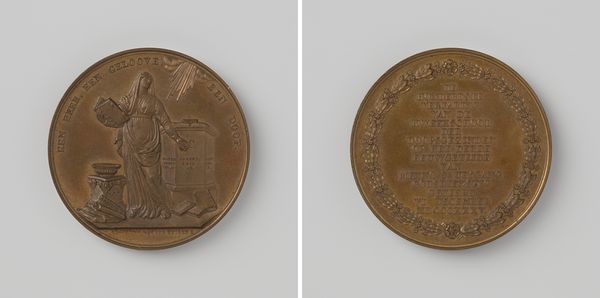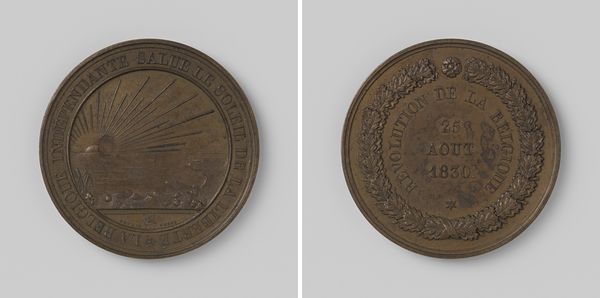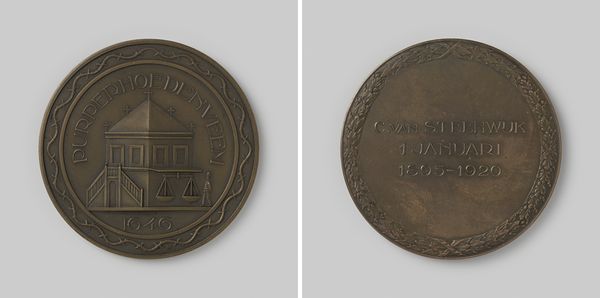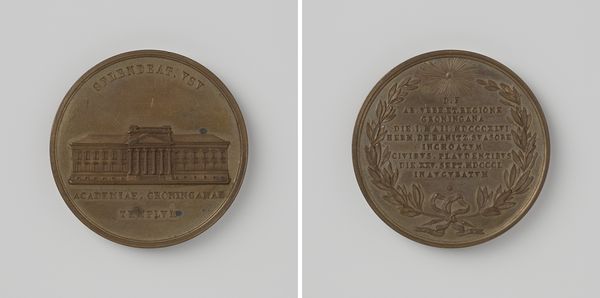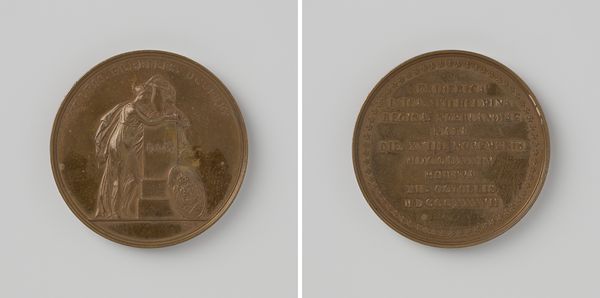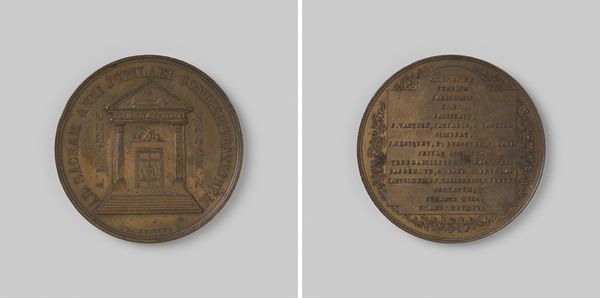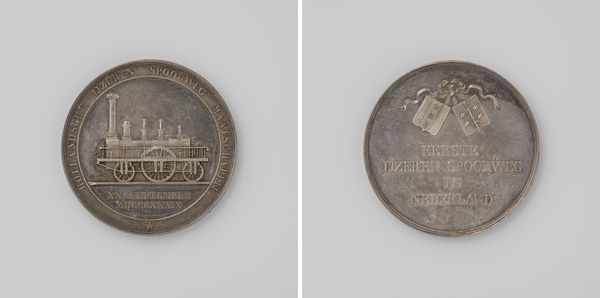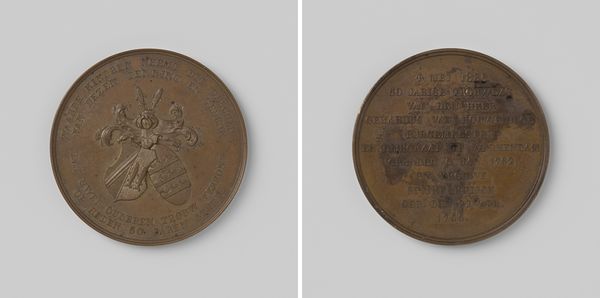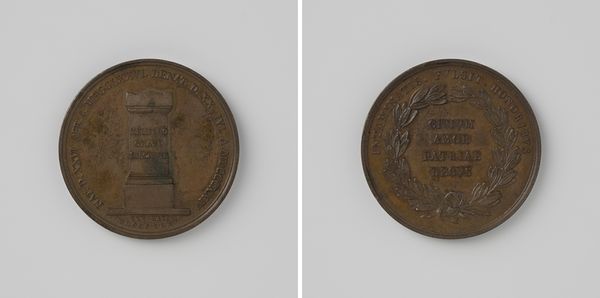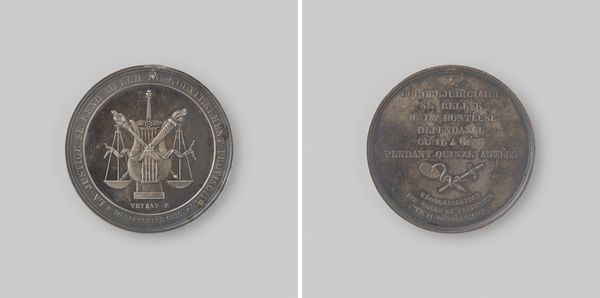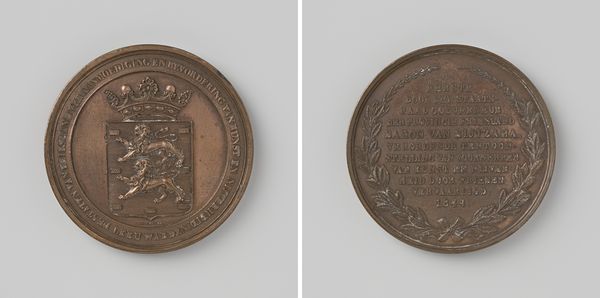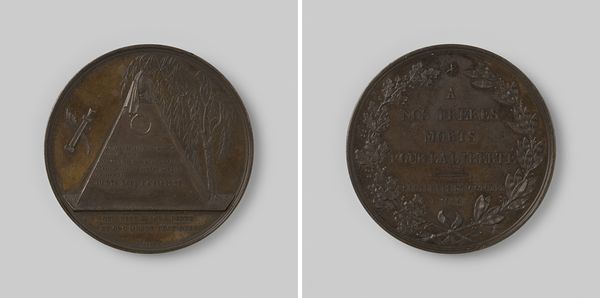
print, relief, bronze
#
medal
#
dutch-golden-age
# print
#
sculpture
#
relief
#
bronze
#
history-painting
Dimensions: diameter 4.2 cm, weight 35.65 gr
Copyright: Rijks Museum: Open Domain
Editor: This bronze medal, commemorating the 1839 "Opening van de spoorweg Haarlem-Amsterdam," seems to capture a sense of burgeoning modernity. The train looks so… authoritative. What should we take away from this piece beyond a simple historical record? Curator: I see this medal as a powerful symbol of progress, but it's crucial to deconstruct what "progress" meant, and *to whom*, in 1839. The railway was transformative, but consider whose lands were impacted, who benefited economically, and who was potentially displaced or marginalized by this new infrastructure. Editor: That's a really interesting point. I hadn't thought about the socio-economic implications. Were there dissenting voices at the time, perhaps raising concerns about these issues? Curator: Absolutely. While the medal celebrates advancement, social historians explore the cost. We have to investigate beyond the intended message and understand that disruptions of this magnitude rarely impact all groups equally. Were there groups advocating for land rights? What about the labor conditions during construction? It's through these questions we start to paint a much more nuanced picture. Editor: So, rather than just accepting the medal's celebratory message, we should use it as a jumping-off point to investigate the complexities of the period. I guess this forces a re-evaluation of progress. Curator: Exactly. It invites a dialogue on whether technological advancements are truly equitable, and forces us to look for the silences or suppressions within dominant narratives. Editor: This really changed my perception of this seemingly simple commemorative medal. It is more of an open ended prompt than anything. Curator: It’s about applying an intersectional lens and allowing historical context to inform a more critical understanding. It prompts us to interrogate every celebration.
Comments
No comments
Be the first to comment and join the conversation on the ultimate creative platform.
